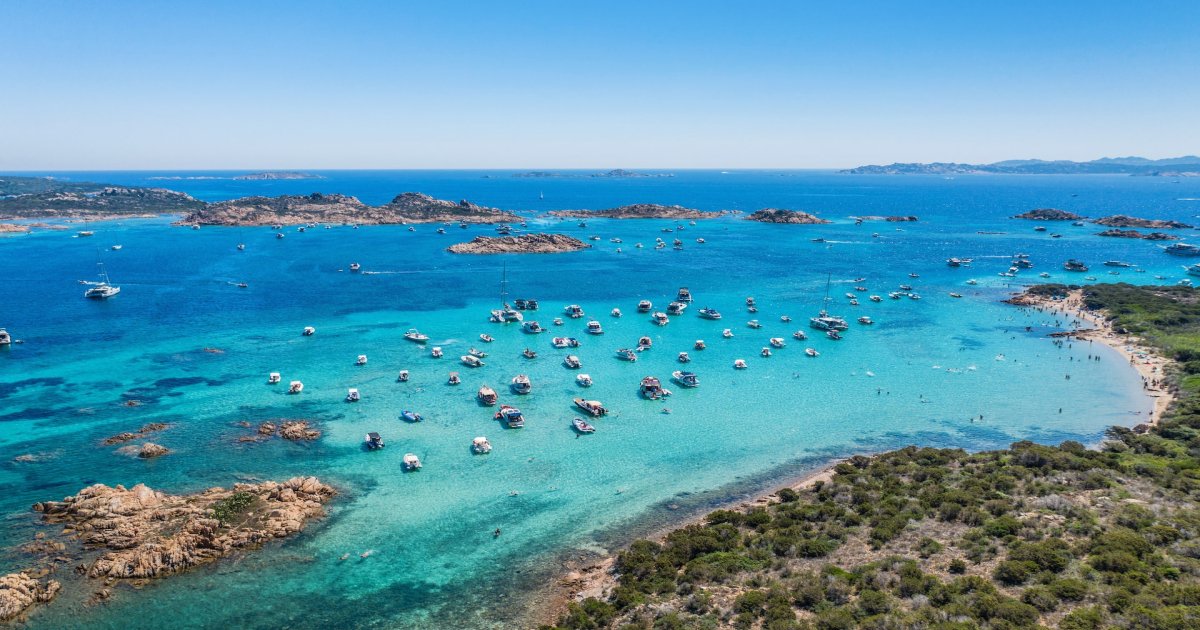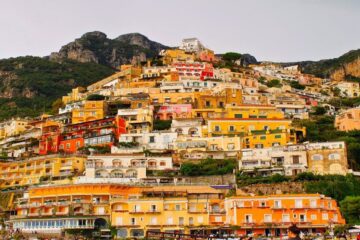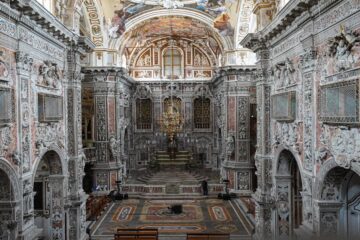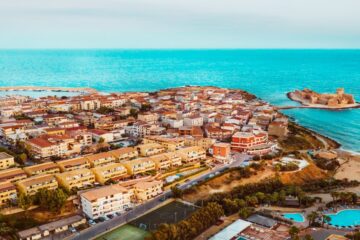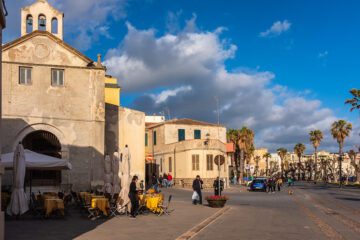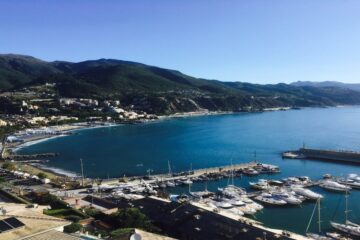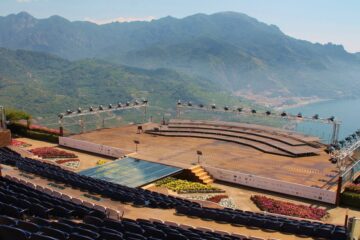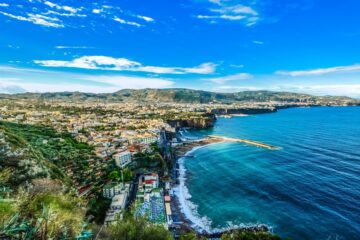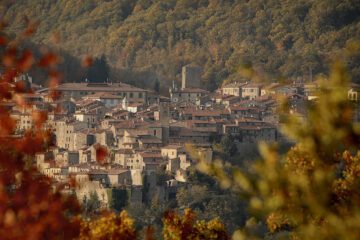Sardinia is one of Europe’s most beautiful and popular island vacation spots. It has beautiful golden beaches, breathtaking volcanic scenery, delectable food, and a laid-back style of life. Here are some fascinating facts about Sardinia that you should know before you go:
1. Sardinia is home to about 7000 ancient archaeological sites dating back to before 1000 BC.
Facts about the country show that people have lived on the island of Sardinia in the Mediterranean Sea for thousands of years. The island has a rich and fascinating history that includes evidence of human settlement dating back to the Paleolithic period, around 18,000 BC.
Over the years, Sardinia has been home to many different groups of people, including the Nuragic people who lived there during the Bronze Age, around 1800–1000 BC. The Nuragic people are known for their unique architecture, which can still be seen all over Sardinia today in the form of large stone towers and other buildings.
Archaeologists have found approximately 7,000 ancient sites on the island that date back to before 1000 BC. These sites have nuraghes, tombs, and other structures that tell us about the history, culture, and technological and artistic achievements of Sardinia’s first people.
Sardinia used to have a small population, which helped keep its archaeological sites in good shape. These sites have given historians and archaeologists important information about the island’s past. Overall, Sardinia is a unique and culturally rich place that gives visitors a glimpse into the island’s fascinating history.
Read also: Uncovering the True Cost of Living in Sardinia
2. Sardinia’s coastline measures around 1850 km long.
Sardinia, which is west of the Italian mainland, is the second-largest island in the Mediterranean Sea after Sicily. The island is known for its stunning natural beauty, which includes picturesque beaches, rocky cliffs, and crystal-clear waters. One notable feature of Sardinia is its coastline, which measures around 1850 km long.
The Sardinian coastline is diverse and offers a range of different landscapes and environments. In some areas, the coast is rugged and rocky, with steep cliffs dropping down to the sea. In other places, the coastline is characterized by long stretches of sandy beaches lapped by turquoise waters.
One of the most famous stretches of the Sardinian coastline is the Costa Smeralda, or “Emerald Coast,” which is located in the northeast of the island. This area is known for its pristine beaches, luxury resorts, and clear waters. Other notable coastal areas in Sardinia include the Gulf of Orosei, which is home to towering cliffs and hidden coves accessible only by boat, and the Costa Verde, a wild and rugged stretch of coastline in the southwest of the island.
The coast of Sardinia has been an important part of the island’s history because it has always been a natural way in and out for seafaring people. The coast is now a popular place for both tourists and locals to go because it has so many things to do, like swimming, sunbathing, sailing, and fishing.
But the beauty of the coast and the fragility of its ecosystems has caused people to worry about how to protect and preserve them. Sustainable tourism practices are being encouraged, and the natural environment of the island’s coast is being protected so that future generations can also enjoy the stunning beauty of Sardinia’s shoreline.
3. The island has the world’s highest number of people who have lived to be 100 years old, with a life expectancy of 81 years.
Sardinia is known for having one of the highest percentages of centenarians, or individuals who live to be 100 years old or older, in the world. Several things, such as genetics, lifestyle, and cultural traditions, might be to blame for this.
Firstly, genetics may play a role in the high number of centenarians in Sardinia. Some studies have identified specific genetic factors that may be associated with longevity, including a gene variant called FOXO3A, which has been found to be more common in centenarians in Sardinia. This gene variant is associated with a reduced risk of age-related diseases such as cancer, heart disease, and Alzheimer’s disease.
Secondly, lifestyle factors may also contribute to the high number of centenarians in Sardinia. The traditional Sardinian diet, which is rich in whole grains, fruits, vegetables, and lean protein sources, has been linked to a lower risk of chronic diseases and may contribute to overall health and longevity. Additionally, physical activity is a regular part of daily life in Sardinia, with many older individuals engaging in physical labor or farming well into their 80s and beyond.
Finally, cultural traditions in Sardinia may also play a role in promoting longevity. In Sardinian culture, social bonds and strong family ties are highly cherished, and many elderly people continue to live with and are cared for by their relatives far into their later years. This feeling of belonging and support may contribute to older people’s general health and well-being.
Read also: The Best Time to Visit Sardinia: Weather, What to Pack, and More!
4. The famous scene in the 1977 film The Spy Who Loved Me where James Bond drives a Lotus Esprit out of the sea was filmed on Sardinia’s Spiaggia Capriccioli.
Spiaggia Capriccioli, a stunning beach on Sardinia’s northeastern coast, was the location for one of the most iconic scenes in James Bond movie history. In the 1977 film The Spy Who Loved Me, James Bond famously drove a Lotus Esprit sports car out of the sea and onto the beach. The crystal-clear waters, fine white sand, and granite rock formations of Spiaggia Capriccioli make it a favorite spot for tourists and locals alike, and it provides a breathtaking view of the whole coast.
To film the scene, a specially modified Lotus Esprit that could turn into a submarine was used. The car was driven into the water, where it transformed into a submarine, allowing James Bond to escape from his enemies and avoid danger. This scene has become an icon in its own right and is one of the most memorable parts of the James Bond franchise.
Today, visitors to Sardinia can visit Spiaggia Capriccioli, see the location where this famous scene was filmed, and even imagine themselves as James Bond, driving a sports car out of the sea and onto the beach. It’s just one of the many unique and exciting facts about Sardinia.
5. It is the only region of Italy to not have a motorway.
Sardinia is the only region of Italy that does not have a motorway or an expressway that is designed for high-speed traffic and long-distance travel. It does not have a highway because of a mix of geographical, economic, and political reasons.
Sardinia is an island in the Mediterranean Sea. The Tyrrhenian Sea to the east and the Strait of Bonifacio to the north separate it from the rest of Italy. This geographic isolation makes building a motorway to connect Sardinia with the mainland more challenging and expensive than building one on the mainland.
Sardinia is one of the poorest parts of Italy in terms of its economy, which is mostly based on farming, raising animals, and fishing. The island has a relatively small population and a limited number of industries, which means that there is less demand for high-speed transportation infrastructure.
Sardinia’s lack of a highway has been a source of political debate and controversy for a long time. Some politicians and activists have said that the island’s lack of a motorway has slowed down economic growth and development by making it harder for businesses to move goods and for tourists to visit far-flung parts of the island. Others have said that building a motorway would be expensive and bad for the environment and that we should instead focus on other ways to get around, like trains and ports.
Even with all of these arguments, there are plans to build a highway in Sardinia called the Sassari-Olbia highway. This motorway would connect the cities of Sassari and Olbia and would be the first motorway on the island. But environmental groups and local residents are against the project because they are worried about how it will affect the island’s natural habitats and cultural history.
Read also: Exploring Porto Ferro Beach & Sardinia’s Nude Beaches
6. Designated national parkland and wildlife reserves take up 25% of the island.
About 25% of the island of Sardinia is made up of national parks and wildlife reserves. This makes it a haven for wildlife and a popular place for people who love nature and the outdoors.
National parks and wildlife reserves are areas that have been set aside for the protection and conservation of natural resources and wildlife. In Sardinia, these protected areas include several national parks, such as Gennargentu National Park, which covers over 73,000 hectares of mountainous terrain and is home to a wide range of plant and animal species, including the rare Sardinian deer and the golden eagle.
Other protected areas in Sardinia include wildlife reserves, such as the Stagno di Molentargius wildlife reserve, which covers over 1,500 hectares of wetlands and salt pans and is home to thousands of flamingos, herons, and other waterbirds.
The establishment of these protected areas is important for several reasons. Firstly, they help to conserve biodiversity and protect threatened and endangered species from habitat loss and other human activities. Secondly, they provide opportunities for scientific research and environmental education, which can help promote public awareness and understanding of the importance of conservation.
7. Found in the Gennargentu Ranges, the highest peak in Sardinia is Punta La Marmora, which is 1834 m high.
The island of Sardinia is home to the highest point, Punta La Marmora, which stands at 1834 meters above sea level. This peak is in the Gennargentu Ranges, which are the highest mountains on the island and cover a large part of it. From the top of Punta La Marmora, hikers and people who like being outside can see rough mountains, deep valleys, and clear lakes. It is a perfect spot for those who want to experience Sardinia’s stunning scenery and wildlife. Don’t miss the chance to climb the highest peak while exploring the fascinating facts about Sardinia.
8. Asinara, a small island off the coast of Sardinia, is home to a colony of wild albino donkeys.
Asinara is a small island off the coast of Sardinia that is known for its beautiful beaches, clear water, and a wide variety of plants and animals. The island is known for its population of wild albino donkeys. The Spaniards are believed to have brought these donkeys to the island in the 16th century. The donkeys now graze freely on the island and are a great attraction for tourists who come to observe them in their natural environment. Asinara is also home to the Mediterranean monk seal and the white falcon, both of which are rare and in danger of going extinct. The Italian government has made the island a national park to protect the unique animals and plants that live there.
9. Sardinia was previously known as Ichnusa.
Sardinia is the second-largest island in the Mediterranean. The ancient Greeks used to call it Ichnusa. The name Ichnusa is derived from the Greek word “Ichnos,” which means footprint, as the island is said to resemble a footprint when viewed from above. The name Sardinia is believed to have been given to the island by the Romans, who called it “Sardus” after a legendary hero named Sardus, who was said to have founded the first human settlements on the island.
10. It is the second largest island in the Mediterranean after Sicily.
Sardinia is the second largest island in the Mediterranean after Sicily, with a total area of around 24,000 square kilometers. The island is located to the west of Italy and is known for its stunning natural beauty, rich cultural heritage, and unique blend of Italian and Mediterranean influences.
Sardinia has many different kinds of landscapes, such as rugged mountains, rolling hills, and beautiful beaches. Around 1,850 kilometers of coastline surround the island, giving visitors a lot of different beaches and coves to check out.
The island has a rich history that dates back thousands of years, with evidence of human settlements dating back to the Neolithic period. The Phoenicians, Romans, and Spanish are just a few of the numerous civilizations that have ruled Sardinia throughout its history.
Today, Sardinia is a popular tourist destination that attracts visitors from all over the world with its beautiful scenery, rich cultural heritage, and unique cuisine. Whether you’re interested in history, nature, or simply relaxing on the beach, Sardinia has something to offer everyone.

